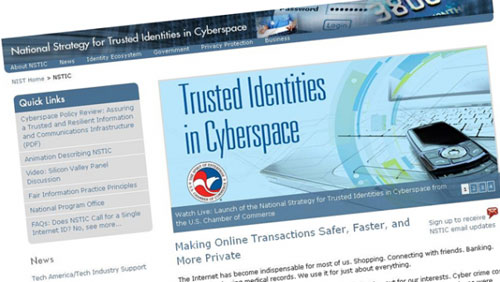MorphoTrust’s NSTIC pilot working toward eID for N.C. residents
03 February, 2015
category: Digital ID, Government
MorphoTrust was awarded a grant last September to pilot the creation of an electronic ID (eID) as part of the White House’s National Strategy for Trusted Identities in Cyberspace (NSTIC). The company wants to provide a widely accessible means for asserting and proving identity online with a high level of trust.
Last week, MorphoTrust gave an update at the IDESG 12th Plenary Meeting in Atlanta. The audience was shown visuals of the registration and login processes. Project milestones were highlighted, including key deliverables in the first 12 months to prepare for the operational pilot with real users starting in the sixteenth month.
“MorphoTrust set out to prove that an electronic ID can be created with the same level of trust as a driver license that can be used to eliminate in-person identity proofing and secure online transactions,” says Mark DiFraia, MorphoTrust’s senior director of Solutions Strategy.
The pilot enables North Carolina driver license/state ID holders to apply for Food and Nutrition Services benefits through the Department of Health and Human Services without having to appear in person to prove their identities.
Seven partners have joined the project: the North Carolina Department of Transportation and DHHS, the University of Texas at Austin Center for Identity, Gluu, miiCard, Toopher, and privacy expert Debra Diener. The project schedule spans two years and includes operating a live pilot with NC residents.
“Our group will help the marketplace value the in-person identity proofing process of Department of Transportation,” DiFraia says. “While we will immediately create a trusted eID to eliminate the need for Food and Nutrition Services applicants to appear in person – saving Health and Human Services money and improving services to North Carolina residents – together we’re hoping to prove that this process can be replicated in a number of useful scenarios.”
The pilot addresses three specific uses:
- eID registration – Users create the electronic credential, scanning their driver license and using a smartphone to take their picture, which will be compared to the driver’s record at NCDOT.
- Login using the eID – Users scan a QR code from the DHHS website with their smartphone app and automatically log in to the portal.
- Expedited application for FNS benefits using an eID
“We’ll prove that this can be applied in other settings. miiCard will prove that they can interface with the eID as a means of ‘leveling up’ the trust of their own consumers’ eIDs, while Toopher will prove that people can select an identity authenticator of their choice.” DiFraia says. “By the end of the pilot, we will have demonstrated the eID in use with real people, solving a real Health and Human Services business problem while highlighting how it can be extended beyond the pilot toward commercial channels.”
DiFraia says the user experience is critical to the project’s success. The solution must be easy to use while addressing NSTIC guiding principles around privacy, security, interoperability, and cost effectiveness.



